
EVANSTON, Ill. — A miniature robotic crab tinier than a flea has become the smallest-ever remote-controlled robot. Measuring just a half-millimeter wide, it can walk, bend, twist, turn, and even jump.
The remarkable record-breaking micro machine was developed by engineers at Northwestern University and comes in the form of a tiny peekytoe crab. The same team also developed millimeter-sized robots resembling inchworms, crickets, and beetles.
Although the research is exploratory at the moment, they believe the technology might bring the field of robotics closer to realizing micro-sized robots that can perform practical tasks inside tightly confined spaces. The researchers also produced a winged microchip last year that was the smallest-ever human-made flying structure.
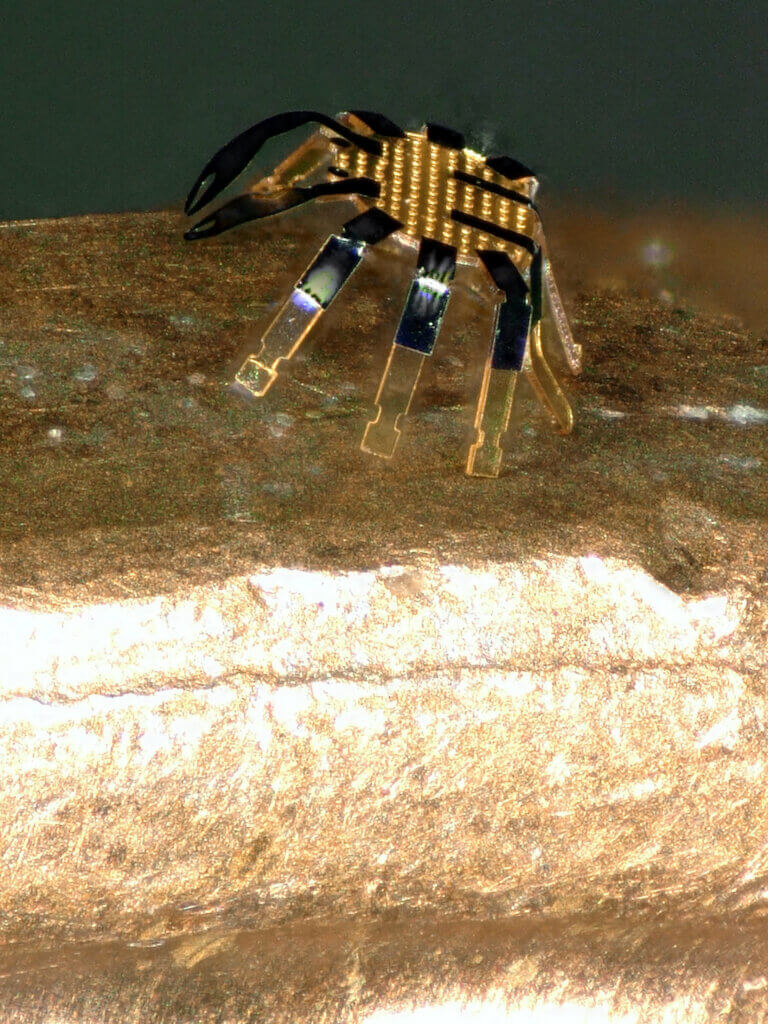
Robots running without electricity?
“Robotics is an exciting field of research, and the development of microscale robots is a fun topic for academic exploration,” says bioelectronics pioneer Professor John Rogers, who led the experimental work, in a university release.
“You might imagine micro-robots as agents to repair or assemble small structures or machines in industry or as surgical assistants to clear clogged arteries, to stop internal bleeding or to eliminate cancerous tumors — all in minimally invasive procedures.”
“Our technology enables a variety of controlled motion modalities and can walk with an average speed of half its body length per second,” adds Yonggang Huang, who led the theoretical work. “This is very challenging to achieve at such small scales for terrestrial robots.”
Smaller than a flea, the crab is not powered by complex hardware, hydraulics, or electricity. Instead, Prof. Rogers explains that its power lies within the elastic resilience of its body.
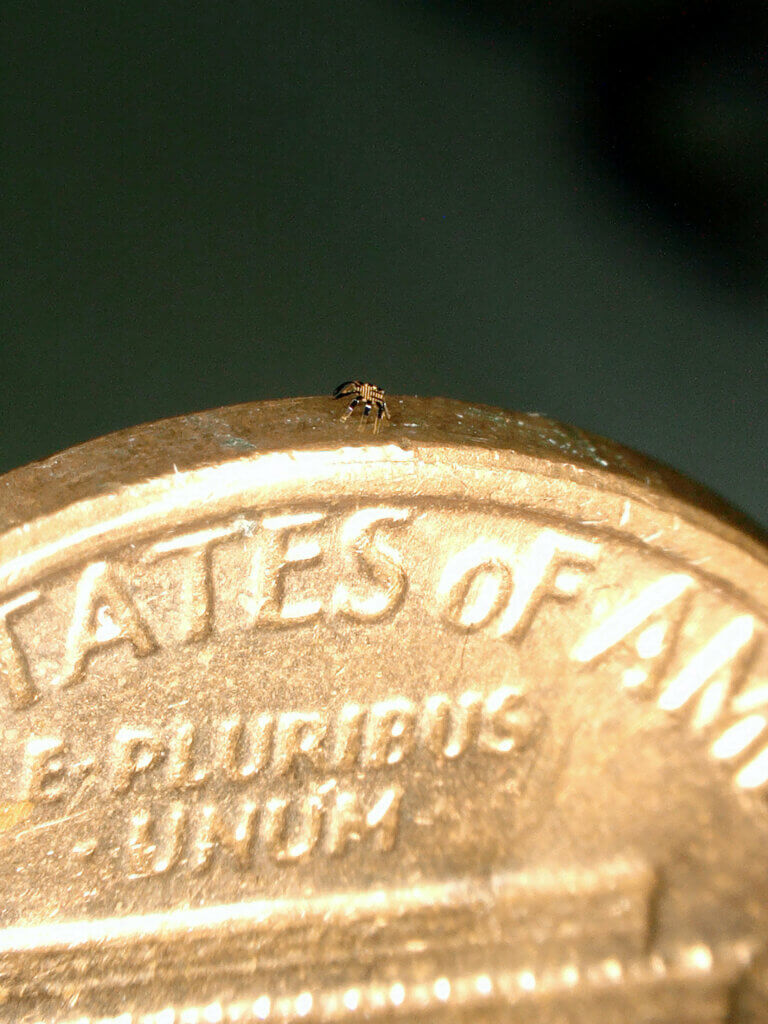
To build the mini machine, the researchers used a shape-memory alloy material that transforms to its “remembered” shape when heated. In this case, the researchers used a scanned laser beam to rapidly heat the robot at different targeted locations across its body.
A thin coating of glass elastically returns that corresponding part of structure to its deformed shape upon cooling. Prof. Rogers adds that as the robot changes from one phase to another, deformed to remembered shape and back again, it creates locomotion.
He explains that not only does the laser remotely control the robot to activate it, but the laser scanning direction also determines the robot’s walking direction. Scanning from left to right, for example, causes the robot to move from right to left.
“Because these structures are so tiny, the rate of cooling is very fast,” Rogers explains. “In fact, reducing the sizes of these robots allows them to run faster.”
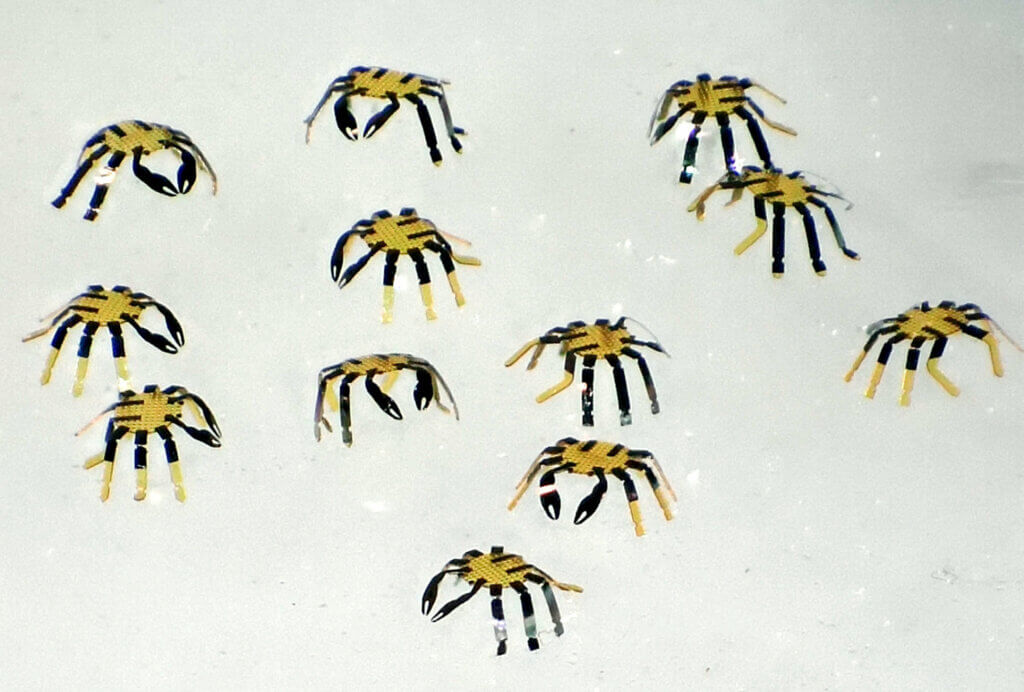
‘Pop-up book’ robotics?
To manufacture such a tiny machine, Rogers and Huang turned to a technique they introduced eight years ago – a pop-up assembly method inspired by a child’s pop-up book.
The team began by fabricating precursors to the walking crab structures in flat, planar geometries. Then, they bonded the precursors onto a slightly stretched rubber substrate.
When the stretched substrate is relaxed, a controlled buckling process occurs that causes the crab to “pop up” into precisely defined three-dimensional forms. The manufacturing method would allow the team to develop robots of various shapes and sizes, but the crab was down to the students.
“With these assembly techniques and materials concepts, we can build walking robots with almost any sizes or 3D shapes,” Rogers concludes. “But the students felt inspired and amused by the sideways crawling motions of tiny crabs. It was a creative whim.”
The findings were published in the journal Science Robotics.
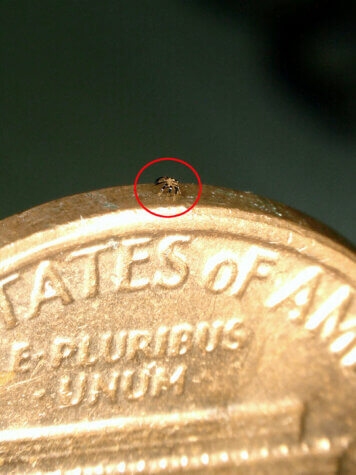
South West News Service writer Stephen Beech contributed to this report.
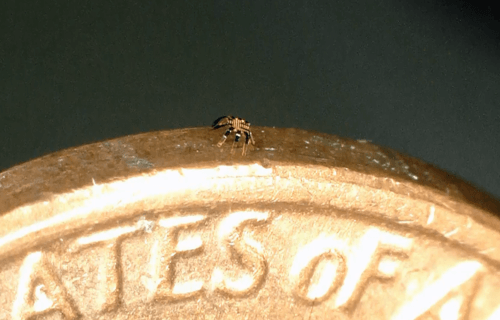
Doesn’t do much other than shimmy. No sensors. No actuators. No intelligence. Can only operate out in the open using machines THOUSANDS of times bigger than it is. How is this an advancement? Typical “News” I find on Studyfinds.org. They are to scientific research what The Onion is to journalism.
I just hope that you are not a teacher.
If you’re bored, can you do better? Or are you just in a Troll mood? I hope your day gets more productive.
Unfortunately it’s this type of technology reduction that causes some people to fear vaccines. That the government is or will be injecting them with tech for nefarious reasons, regardless of the size of the controller. For others it could be seen as an invasion of privacy, since tech of this size would be hard to determine its whereabouts, granted the controlling mechanism would still need to be miniaturized or hidden.
Nano tech is real, nanowires are copyrighted. Who owns those copyrights? There is nanotechnology in the jabbed. Look who owns the nanowire patents.
lol